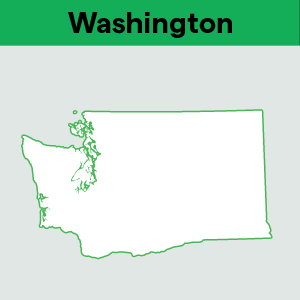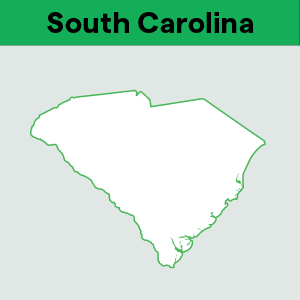Five tips for boosting Amazon private label sales
by December 1, 2024
Smart sellers know that private label sales are the future of eCommerce, especially with Amazon itself getting into the game. In order to remain competitive in the long-run, Amazon sellers need to come up with a viable and sustainable private label strategy that keeps sales moving and profits growing.
From sourcing and pricing to listing optimization and more, here are here are five must-use tips for boosting Amazon private label sales today so you can continue investing in this lucrative niche of eCommerce as your business scales.
1. Target only high-margin products for private label with meticulous research
Unless you’re Amazon, you probably won’t be able to survive for decades on revenue alone before generating a profit. So, when it comes to sourcing private label products, it pays to have a specific type of product in mind that’s both easy to fulfill (to keep costs down) and highly profitable.
To discover high-margin products that would be prime for private label, you can use a tool like Jungle Scout to conduct Amazon product research based on other Amazon products’ sales history and competitive landscape.
We recommend limiting your search to items that meet the following set of criteria:
- A profit margin of at least 30% to 40% based on your minimum profit tolerance
- Small dimensions and lightweight to minimize shipping and storage costs
- A minimum sales price of $15 to make your hard work worth it
- Sturdy to avoid order defects
- Immune to seasonality so you can sell all year
On top of the above traits, consider sourcing products from China to cut down on manufacturing costs and only invest in private label products that belong to categories eligible for Amazon PPC advertising so you can take advantage of paid ads (and top placement on Amazon search engine results pages).
Lastly, take the time to examine the depth of competition on products you’re thinking about private labeling. The less competitive the space, the more impact you can make within it — and the higher you can charge.
2. Use only beautiful images for your private label listings
When you’re in control of the images that represent your products, it’s absolutely vital that you invest in beautiful Amazon product photography.
If your product images are blurry, taken at poor angles or in bad lighting, or generally look ugly, you’d better believe your sales will suffer. It’s better to spend money on a professional product photographer or invest in a decent camera than to rely on shoddy equipment and amateur photography to get the job done.
If you’re still in the phase of narrowing down potential contenders for the products you’ll be private labeling, a great strategy is to analyze the images being used by competing private label sellers. If you find a product that is consistently represented with poor images, it should raise that product’s stock as a candidate for sourcing, since you can shake up the competitive landscape by entering the fray with better photos than anyone else.
And, if you’ve already started listing private label products, go back and make sure your images meet the highest possible standards. After all, your sales are directly proportional to your products’ image quality.
3. Optimize for Amazon search by using strategic Amazon SEO techniques
Once you’ve taken care of the visual aspects of your private label listing, it’s time to optimize the text using strategic Amazon SEO.
This is yet another area where you can start by checking the listings of similar private label products to identify both the must-haves for your listing and any gaps in the information your competitors are providing.
It can’t be stressed enough that your competitors may not be doing their own listings to the best of their ability, so always try to see what their listings are lacking so you can incorporate those vital bits of missing information into your listings.
Listing optimization includes the way you title your private label products along with how you describe them, and you should always consider the keywords potential customers are using to search for the products you sell so that they can show up in Amazon search results and have an enticing enough title to get them to click onto your listing.
Take note of product titles and descriptions that would move you to buy something, and use the same words, phrases, and descriptive techniques when crafting your optimized Amazon listings.
4. Use automated repricing to optimize your private label prices for a target sales velocity
When it comes to standing out on Amazon, perhaps nothing is more important than having an attractive price.
For products that face heavy competition, automated repricing software that relies on competitor exclusion settings and custom rules has been the traditional method of staying constantly competitive on price on Amazon and beyond. With these repricers, you could set it up where your prices would adjust to price above competition by a set amount in certain situations and price-match competitors in others.
But what about unique private label products that don’t face any direct competition on their listings? Sure, you have competitors selling similar products, but your ASIN is unique to your private label.
In this instance, you could use Informed.co’s new sales velocity algorithm for private label repricing. Using your past 30-day sales velocity as a proxy, our sales velocity algorithm will adjust your prices each day in an effort to stimulate enough sales to meet your new target sales velocity over the next 30 days.
So, let’s say your current 30-day sales velocity is 120 units for a fidget spinner and you’d like to raise it 150 units over the next 30 days. You could then set up a private label repricing strategy based on a target sales velocity of 150, and your sales velocity repricer will strategically move your prices according to our algorithm in an effort to boost your sales to the new target.
And, with the help of our profit-based price range calculator, you can simply input your minimum desired profit (and maximum profit you expect to make) and Informed.co will automatically calculate the min and max prices for any listings on which you use our repricer.
It’s the perfect way to entice more potential customers to buy from you based on having an attractive price while also remaining comfortably profitable on every sale you make.
5. Create unique Amazon bundles
Another great way to boost private label sales is to take advantage of Amazon product bundling to create unique sets of complementary products that people typically purchase at the same time.
An example would be combining a private label kitchen knife with a cut-resistant glove and a cutting board. Or, you could bundle a set of private label ping pong paddles with a set of ping pong balls and a bottle of ping pong table cleaner spray.
If you’re looking for Amazon product bundle inspiration, take a look at the Frequently Bought Together section on listings that belong to similar products to the ones you private label. By seeing what people are already buying often when they purchase something you sell, you’ll be able to quickly and easily come up with new, unique bundle ideas to refine your product line and help your listings stand out from the noisy Amazon marketplace.
And, because you’ll be the only seller on the ASIN for your unique bundles, you can take advantage of sales velocity repricing on bundled listings just like you’d do for individual private label listings, helping you hit your sales targets quicker and with more ease.
Boosting Amazon private label sales: the bottom line
It takes sound strategy, discipline, strong finances, and even a bit of luck to run a successful Amazon private label business. But, if you follow the tips laid out in this article, you’ll be well ahead of the competition.
To wrap things up, remember to:
- Conduct product research upfront to find high-margin products with low depth of competition
- Aim for sturdy, small, and lightweight products that sell for $15+ and are popular year-round
- Optimize your private label listings by using strategic Amazon SEO principles and using only beautiful product images
- Create unique bundles to make our private label products even more enticing
- Use a private label repricer powered by a sales velocity algorithm to help drive you toward your sales targets and keep your products competitive at all times
We hope you’ve found these tips helpful and informative, and if you’d like to give sales velocity repricing a test spin for your Amazon private label products and bundles, wouldn’t it be awesome if you could try it out for free first? Thankfully, with Informed.co, you can!
Just click the image below to learn more about our sales velocity repricing algorithm for private label sellers, and when you’re ready, sign up and get started with a free 14-day trial that includes our private label repricer and our traditional repricing tools for listings that face heavier competition.
This is a guest post by Erik Mathes at Informed.co (formerly Appeagle.








